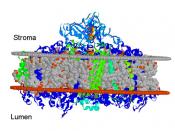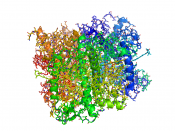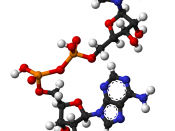Light reactions in photosynthesis involve the absorption and use of light. The reactions take place in the thylakoid membrane where chlorophyll and other kinds of smaller organic molecules are present. There are two types of photosystems, photo system I and photo system II. The reaction center in photo system I is knon as P700 and the reaction center in Photosystem II is P680. The splitting of a water molecule is required to extract electrons for the P680. The cholorphyll molecule becomes excited and passes from the primary electron acceptor of photo system I into photo system I by the ETC. The energy is harnessed by the thylakoid membrane to produce ATP through the process of photophosphorylation. This energy is used in the production of NADPH after a redox reaction. The oxygen that came from the water molecule is released through the air.
In C4 and C3 plants, CO2 enters through the stomata and is diffused into the mesophyll.
The CO2 is stored in the stroma of the mesophyll for use in the Calvin cycle. The ATP and NADPH are used for energy in the reactions. The ATP is an energy source and consumes NADPH as areducing power for high-energy electrons to make sugar. While C3 plants use the palisade layer and the spongy mesophyll, C4 plants use bundle sheaths for the reaction centers. The chloroplasts for C4 cells are found within the bundle sheath cells. C4 plants combine CO2 with RuBP while C3 plants combine CO2 with PEP and use the CAM pathway for transportation. In the Calvin cycle, Carbon dioxide enters the cell, and attaches to a five-carbon sugar. The RUBP caboxylase catalyzes the compound. The product of the reaction is a six-carbon intermediate. Then, a pair of electrons donated from NADPH reduces 3-bisphosphoglcerate to G3P which stoares...


